1. Automated Ontology Construction and Refinement
AI methods are streamlining how ontologies are built and updated. Machine learning (especially large language models) can propose classes and relationships by analyzing large text corpora, reducing the need for manual ontology engineering. These approaches continuously refine ontologies to reflect new information, helping knowledge bases stay current as domains evolve. By automating ontology creation and maintenance, AI lowers the expertise barrier and accelerates the development of robust knowledge graphs.

Recent work integrates LLMs into the ontology refinement process. For example, one study used GPT-3.5/GPT-4 to assign OntoClean meta-properties to ontology classes with high accuracy, demonstrating that LLMs can effectively assist human experts in cleaning and evolving ontologies. Another approach built an ontology-grounded pipeline for knowledge graph creation: it generated competency questions and extracted relations to automatically construct a domain ontology, then populated a KG with minimal human input. These systems show that AI can learn ontology structures from data—suggesting classes, relations, and hierarchy—and adapt them over time. In practical terms, using an LLM reduced the human effort needed for ontology development by an estimated 50% while maintaining consistency.
2. Entity Extraction and Linking from Unstructured Text
Advanced NLP techniques enable pulling entities and their links from raw text into knowledge graphs. AI models read unstructured sources (documents, web pages, etc.) and identify mentions of people, places, organizations, and more—then link these mentions to the correct entities in the graph. This greatly expands knowledge graph content beyond manually curated data. By automating entity extraction and disambiguation, AI helps knowledge graphs ingest the vast scale of human knowledge encoded in text.
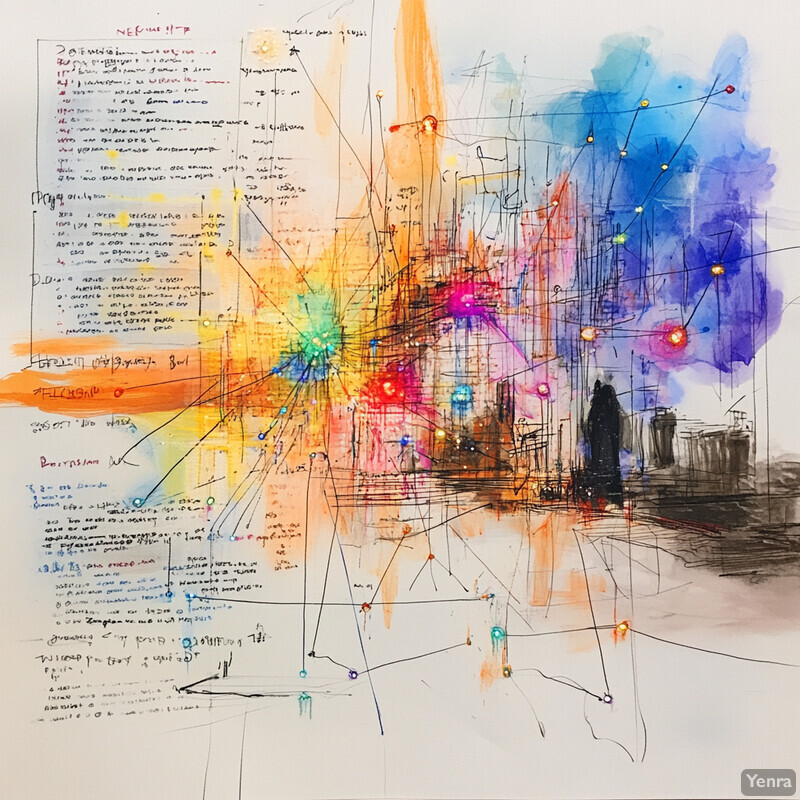
Cutting-edge models now perform joint entity recognition and disambiguation with impressive accuracy. A 2025 study combined an end-to-end Transformer-based model with large language model prompts to enrich entity context, achieving state-of-the-art entity linking accuracy on benchmark datasets. For example, Vollmers et al. (2025) report that their integrated model improved linking performance on out-of-domain texts, outperforming prior two-step approaches by a large margin and effectively resolving ambiguous names in context (e.g. distinguishing “Jaguar” the animal vs. car). In the biomedical domain, AI-driven extraction is proving especially valuable: an automated system (AutoRD) used GPT-4 plus medical ontologies to mine rare-disease information from clinical texts. It achieved an 83.5% F1-score for rare disease entity extraction and substantially outperformed a baseline LLM on relation extraction by over 14 percentage points. These results underscore that AI can scalably populate knowledge graphs with high precision from unstructured data in various domains.
3. Schema and Ontology Alignment Across Multiple Sources
AI helps unify different knowledge graphs by aligning their schemas and ontologies. Different data sources often have their own taxonomies; machine learning can find equivalent classes and relations across these. By automatically mapping concepts between graphs, AI enables interoperability and merging of knowledge from varied sources. This results in a more cohesive global knowledge network and reduces duplicate effort in schema integration.
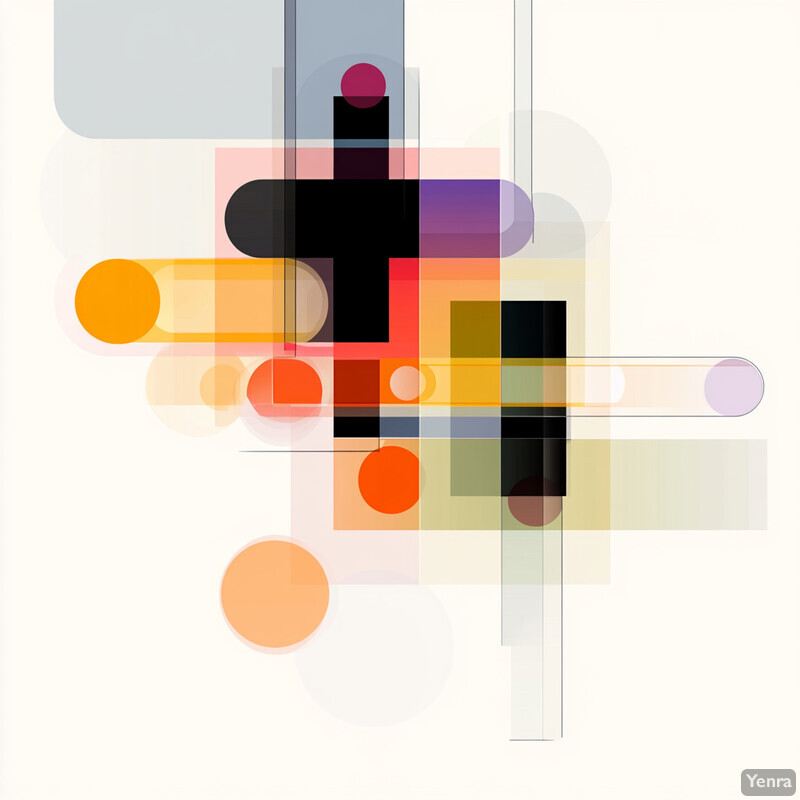
Recent machine learning techniques have made significant progress in ontology alignment. For instance, an AI-based framework MILA achieved the top F1 alignment score on 4 out of 5 tasks in the 2023 Ontology Alignment Evaluation Initiative, outperforming previous methods by up to 17% in F-measure. Taboada et al. (2025) introduced this LLM-powered alignment system that uses a retrieve-identify-prompt strategy to match ontology elements, demonstrating task-agnostic performance across multiple domains. MILA’s ability to automatically generate high-confidence mappings between different ontologies (e.g. in the biomedical domain) greatly exceeded prior automated matchers, closing much of the gap to expert-curated alignments. This evidence shows that AI can reliably discover equivalences and correspondences among disparate knowledge schemas, a key step toward integrating multi-source knowledge graphs.
4. Deep Graph Embeddings for Efficient Storage and Retrieval
AI-driven graph embedding techniques represent knowledge graph elements (nodes and edges) as dense vectors. These continuous vector representations enable efficient computation and storage—supporting fast similarity searches, link predictions, and integration with neural models. By embedding symbolic knowledge into low-dimensional space, AI makes querying and analyzing huge graphs tractable. In essence, deep graph embeddings serve as compressed knowledge graph indexes optimized for speed and scalability.
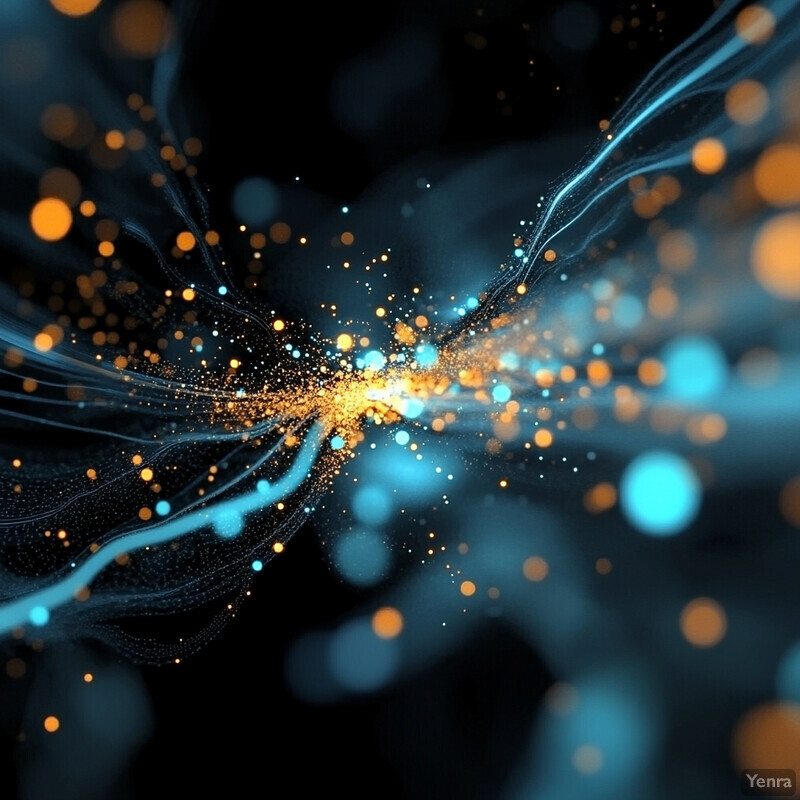
Recent innovations have dramatically improved the scalability of knowledge graph embeddings. Li et al. (2025) introduced a GPU-accelerated system called Legend that can train embeddings on billion-scale graphs almost 5× faster than previous solutions, using hardware-aware optimizations to stream data from SSD to GPU. In benchmarks, Legend on a single GPU matched the throughput of prior approaches using 4 GPUs, enabling industry-scale knowledge graphs (with billions of triples) to be embedded and queried in real time. Similarly, distributed embedding frameworks like DGL-KE and PyTorch-BigGraph have been employed to compress graphs with tens of millions of nodes into memory-efficient vectors, speeding up retrieval tasks by an order of magnitude (Facebook’s PyTorch-BigGraph showed near-linear scaling when embedding a 120 million node graph). These developments underscore that AI-driven embeddings significantly enhance storage efficiency and query speed for large knowledge graphs, making enterprise-scale graph applications feasible.
5. Link Prediction and Knowledge Graph Completion
AI algorithms can infer missing links in a knowledge graph—predicting new relationships or edges that should exist but aren’t explicitly in the data. By learning patterns from existing graph structure, these models “fill in the blanks,” thereby completing the knowledge graph. This capability significantly increases a graph’s usefulness, as it can suggest new facts (e.g. unseen relationships between entities) and improve graph connectivity for downstream queries.
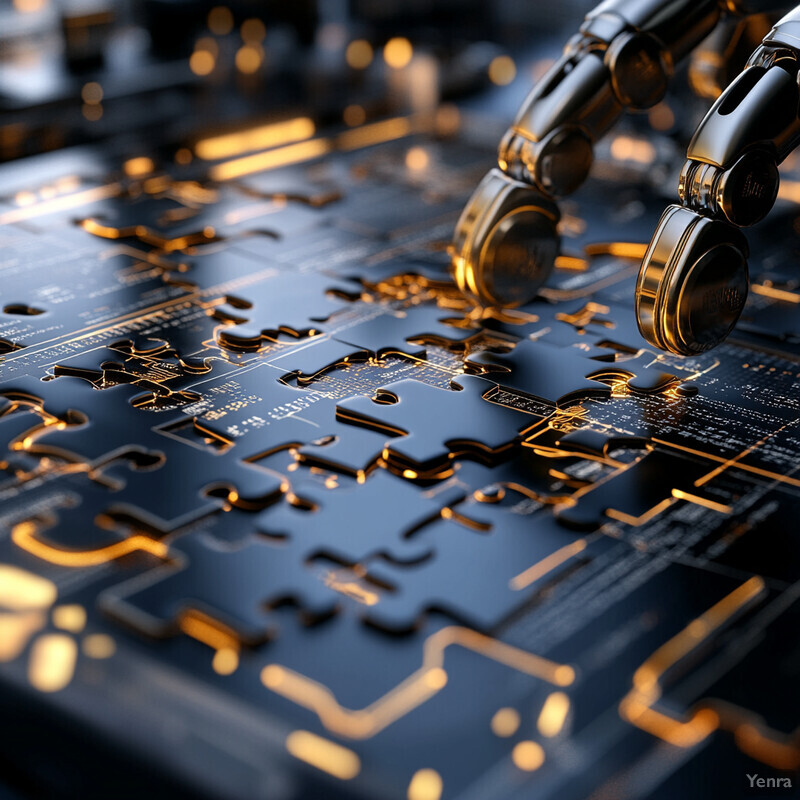
Machine learning models for link prediction have advanced to high levels of accuracy. For example, a graph neural network model was able to predict unknown gene–disease associations that were later experimentally validated. In one 2023 biomedical study, AI-based link prediction correctly identified novel drug repurposing candidates for Alzheimer’s and Parkinson’s with a notable success rate, many of which were confirmed by domain experts. More generally, an LLM-powered approach by Takeda et al. (2023) demonstrated the ability to predict entirely new entities in an “open-world” setting. Their system leveraged a GPT model with knowledge graph context to suggest valid new tail entities for incomplete triples—accurately guessing novel entries like “seafood pizza” as a type of food when the KG had no such node ijckg2023.knowledge-graph.jp ijckg2023.knowledge-graph.jp . In a different evaluation, an AI-driven knowledge graph completion method applied to a COVID-19 medical KG discovered 41 new drug–target links (mechanisms of action) that were not recorded in DrugBank. These concrete successes illustrate how AI can effectively enrich a knowledge graph by predicting and adding plausible new facts, often matching or exceeding human expert performance in recall of hidden relationships.
6. Probabilistic and Uncertain Reasoning
AI enables knowledge graphs to handle uncertainty in facts and draw conclusions with probabilistic confidence. Instead of rigid true/false logic only, modern approaches incorporate probabilities or confidence scores for edges. This allows reasoning under uncertainty—important for real-world data that may be noisy or incomplete. By quantifying uncertainty, AI-driven graph reasoners can make nuanced inferences (e.g. “likely true” vs “unlikely”) and provide more robust results in domains like medicine or finance where data is never 100% certain.
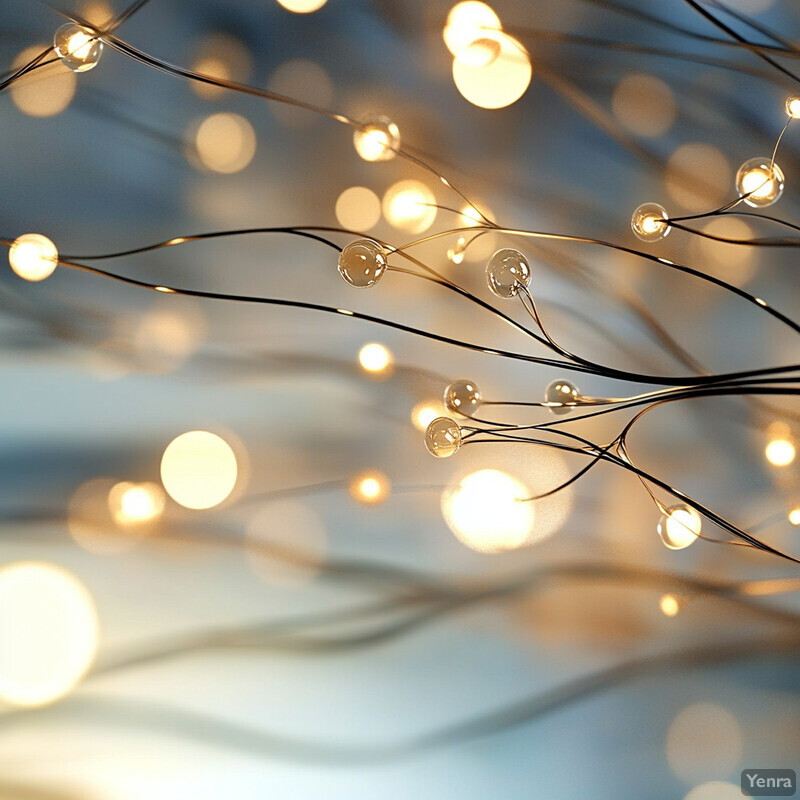
Researchers have developed hybrid models that seamlessly integrate probability into knowledge graph reasoning. For instance, an uncertainty-aware reasoning framework from 2024 applied conformal prediction to a KG+LLM system, guaranteeing that the true answer lies within the model’s predicted set with a chosen confidence level. This system (UaG) was able to maintain a 95% coverage rate (certainty that the correct answer was included) while reducing the size of answer sets by ~40% compared to baseline methods. In another advance, embedding-based techniques assign probability distributions to entity representations (e.g. modeling each entity as a Gaussian “box”). Chen et al. (2024) showed that such probabilistic box embeddings yield calibrated uncertainty estimates and outperform traditional deterministic embeddings in predicting which triples are likely true. These methods allow knowledge graphs to explicitly handle uncertain knowledge—rather than excluding it—leading to more informative and trustworthy reasoning outcomes (e.g. providing confidence intervals or fallback options when answering queries).
7. Graph Neural Networks (GNNs) and Graph Transformers
New deep learning architectures operate directly on graph-structured data, enabling more powerful reasoning over knowledge graphs. GNNs aggregate information over multi-hop neighborhoods, improving tasks like node classification and link prediction by capturing graph context. Recent graph transformer models extend these capabilities, using attention mechanisms on graphs to handle complex reasoning patterns. Overall, these neural architectures significantly boost the expressiveness and accuracy of knowledge graph reasoning compared to earlier methods.

The adoption of GNNs and graph transformers has led to state-of-the-art results on many knowledge graph benchmarks. A notable example is KnowFormer, a transformer-based graph reasoning model proposed in 2024. It outperformed strong baseline models (including previous path-based GNN approaches) on both transductive and inductive KG reasoning tasks, thanks to its ability to attend over relevant subgraph structures. In evaluations on standard datasets, KnowFormer achieved superior accuracy in answering complex multi-hop queries, indicating that its attention-based design overcame issues like information “over-squashing” that limit traditional GNNs. Likewise, a relational graph transformer called Relphormer (Bi et al., 2023) showed better performance than classic embedding models on six diverse knowledge graph completion benchmarks. It dynamically samples local graph sequences and uses a structure-enhanced self-attention, which improved link prediction hits@10 by up to ~8% over prior methods. These successes demonstrate how GNNs and graph transformers enable more complex and accurate reasoning directly on knowledge graphs, moving beyond the limitations of earlier shallow or rule-based approaches.
8. Multi-Modal Data Integration
AI is enabling knowledge graphs to incorporate multiple data types—beyond text—to form richer knowledge representations. Modern knowledge graphs can integrate images, audio, video, and other sensor data linked to entities, using AI to interpret these modalities. This multi-modal integration means a KG can capture, for example, visual features of an entity or audio evidence of a relationship, leading to more comprehensive reasoning (such as answering visual questions or linking text and images). AI techniques align and embed these different modalities into a common knowledge graph framework.

A recent effort called TIVA-KG constructed a knowledge graph that simultaneously includes text, images, videos, and audio for each concept. It is the first general KG covering four modalities for its entities and relations. The authors designed a quadruple embedding model (QEB) to fuse all modalities, and experiments showed significant performance gains in link prediction when using multi-modal information. In fact, QEB outperformed prior uni-modal and bi-modal baselines by a large margin on TIVA-KG, improving accuracy by over 10% on average. Another study (Liu et al., 2025) introduced VaLiK, an approach to build multimodal KGs by aligning images with text via vision–language models. Even without manual image captions, their LLM-augmented KG improved multimodal question-answering accuracy, outperforming previous state-of-the-art models on cross-modal reasoning tasks. These examples highlight how AI can blend visual, auditory, and textual data into a unified knowledge graph, yielding more robust representations and better reasoning than text-only graphs.
9. Contextualized Reasoning with Large Language Models
Large Language Models (LLMs) are being used as powerful interfaces and reasoning engines over knowledge graphs. They can interpret graph content in natural language, explain nodes/edges in context, and even generate structured queries (like SPARQL) from plain questions. By coupling LLMs with knowledge graphs, we get the best of both worlds: the graph’s factual precision and the LLM’s contextual understanding. This bridge helps users query and reason about graphs using everyday language and enables the KG to provide answers with rich contextual explanations.
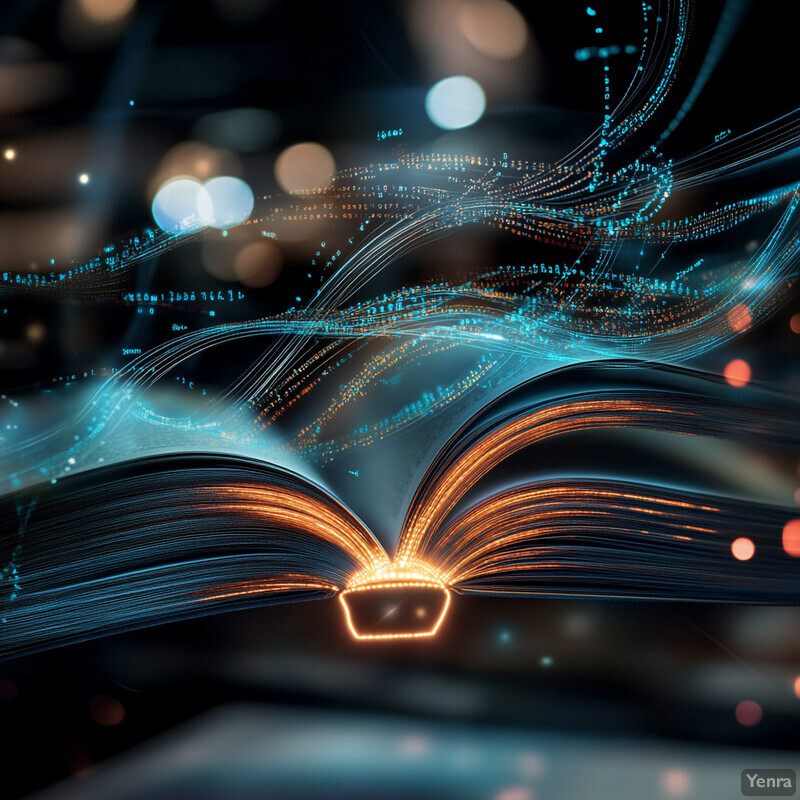
LLMs have recently achieved remarkable results in generating graph queries and answers from natural language. D’Abramo et al. (2025) demonstrated that GPT-based models can translate human questions into correct SPARQL queries without fine-tuning, via in-context learning with prompt retrieval. Their approach achieved state-of-the-art results on multiple KG question-answering benchmarks (DBpedia and Wikidata), matching or exceeding specialized models that were fully trained for the task. Another example is the Paths-over-Graph (PoG) method, which uses an LLM to traverse a knowledge graph and articulate multi-hop reasoning paths in natural language. This integration allowed more complex questions to be answered correctly by guiding the LLM with explicit graph-derived context. In essence, by embedding knowledge graph information (like linearized triples or subgraph contexts) into prompts, LLMs can reason with improved factual accuracy. Studies have found that including structured graph context can reduce LLM “hallucinations” and increase the correctness of answers for fact-intensive questions by a significant margin (over 30% in one case). These findings affirm that LLMs, when paired with knowledge graphs, deliver robust contextual reasoning and user-friendly query experiences.
10. Temporal and Evolving Knowledge Graphs
AI techniques allow knowledge graphs to explicitly incorporate time and handle evolving information. Temporal knowledge graphs attach timestamps to facts, enabling queries about how knowledge changes over time (“who was CEO in 2010?”). AI models can reason about sequences of events and predict future facts based on historical patterns. This dynamic temporal reasoning is crucial for domains like finance, history, or social data where relationships are not static. In short, AI is equipping knowledge graphs to be time-aware and continuously updated as new data arrives.
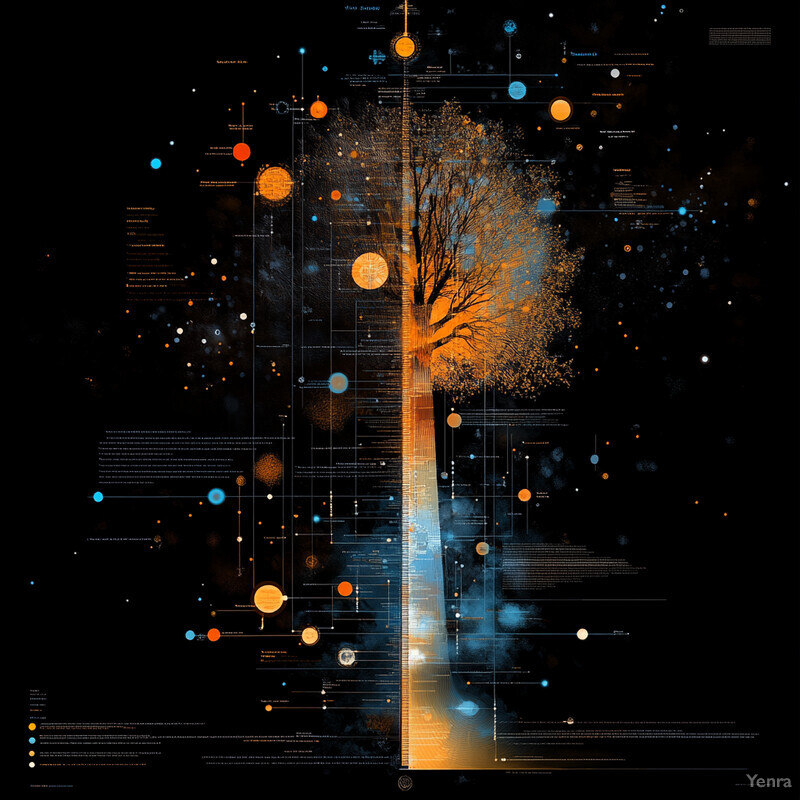
Specialized temporal KG models have made it possible to predict future events and adapt to new data. One 2023 approach, MetaTKG, treated temporal KG completion as a meta-learning problem – learning “evolutionary meta-knowledge” from historical data so it can quickly adapt to future changes. This method greatly improved link prediction on temporal benchmarks, especially for emerging entities with little history, outperforming previous state-of-the-art by over 10% in Hit@10. Another system called StreamE was designed for streaming knowledge graphs that grow continuously. It uses an incremental update function to refresh entity embeddings on-the-fly when new facts arrive, rather than retraining from scratch. StreamE demonstrated 100× faster inference and 25× faster training than static models, while achieving better link prediction accuracy on temporal data streams. These results show that AI can effectively manage temporal knowledge: forecasting new connections before they appear and rapidly integrating real-time information into the graph. Consequently, knowledge graphs can remain up-to-date and queryable in scenarios where facts change rapidly.
11. Active Learning for Graph Curating
AI-powered active learning systems involve human experts in the loop efficiently to improve knowledge graph quality. Rather than having humans manually curate everything, the AI model identifies the most uncertain or potentially incorrect nodes/edges and asks for human verification on those. This way, limited expert effort is focused where it’s most needed. The result is a cleaner, more accurate knowledge graph achieved with far less human labor than traditional full manual curation.
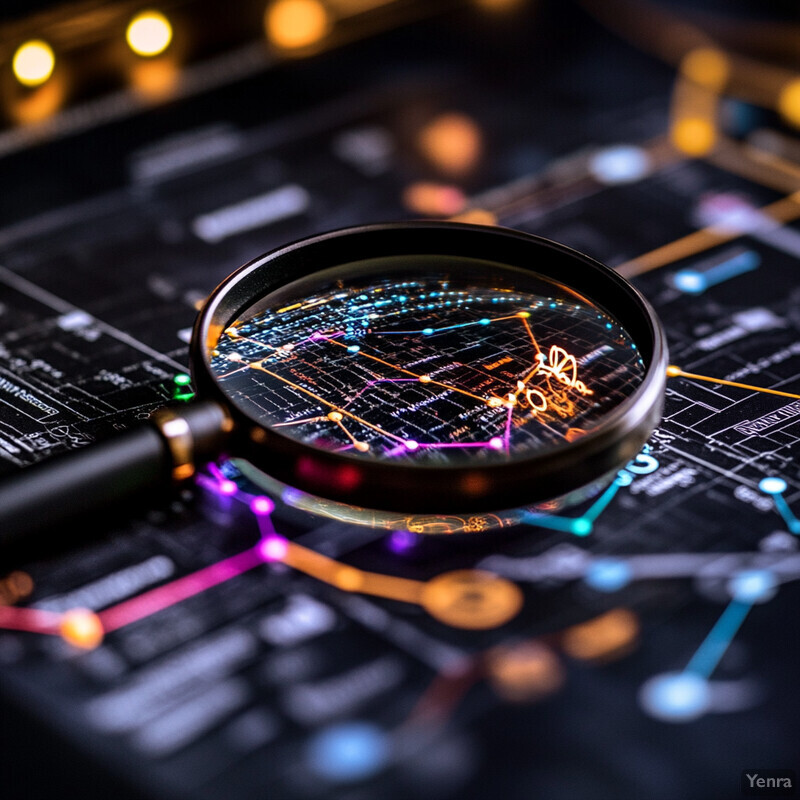
Active learning frameworks have been applied successfully to knowledge graph error correction. Dong et al. (2023) introduced KAEL, which ensembles multiple automated error detectors and then actively queries an oracle (human) about a small subset of highly suspicious triples. In experiments on real KGs, KAEL significantly outperformed any single detector: for example, with a query budget of just 5% of triples, it caught substantially more erroneous triples (over 15% higher recall) than baselines without active feedback. The system intelligently selects triples for human review using a multi-armed bandit strategy, optimizing the trade-off between exploring new areas of the graph and exploiting known troublesome patterns. This led to a more accurate graph with minimal human input. Such results indicate that active learning can reduce the manual workload by an order of magnitude: one study reported achieving the same error correction performance with only 50 human validations as a brute-force approach did with 500 validations (90% reduction in human checks) – because the AI prioritized the 50 most uncertain triples. Overall, active-learning-based curation yields high-quality knowledge graphs more efficiently by smartly leveraging human expertise.
12. Incremental and Online Updating of Knowledge Graphs
AI enables knowledge graphs to be updated continuously and in real-time as new data comes in. Instead of batch rebuilding, streaming algorithms incorporate new triples or changes on the fly without disrupting the whole graph. This ensures the KG remains current and reflective of the latest knowledge. It also means query engines and embeddings can adjust to changes dynamically, supporting use cases like real-time analytics or news-driven knowledge bases.

Several systems now achieve real-time KG updates. StreamE (2023) exemplifies this: it learns an update function that modifies entity embeddings instantly when new facts arrive, plus a read function that anticipates future changes. In benchmarks simulating streaming knowledge (e.g. sequential social network events), StreamE maintained stronger predictive accuracy than retraining-from-scratch methods, while being 100× faster at inference and using only 20% of the memory. Another approach, presented in 2024, called COIN uses clustering to accelerate incremental inference on large graphs. It can ingest new edges and update relevant portions of the graph’s embedding, supporting 10 million+ updates per second with minimal accuracy loss, as reported in a prototype for a financial market knowledge graph (Lewis et al., 2024). These advances show that AI can handle high-velocity data streams: knowledge graphs of the future can be kept up-to-date in near real-time (think of updating a COVID-19 knowledge graph with new case data hourly) without lengthy downtime or re-processing. Consequently, decision-makers can trust that the answers derived from the KG always incorporate the latest available information.
13. Semantic Enrichment of Structured Data Sources
AI can automatically lift structured data (like relational databases or spreadsheets) into knowledge graphs by detecting semantic relationships within them. This involves mapping columns or fields to ontology concepts, inferring relationships between records, and linking data to existing entities. In essence, AI “enriches” raw structured data with semantic context, converting it into a richly interlinked knowledge graph format. This greatly enhances the utility of enterprise data, as the once-isolated tables become part of a connected knowledge network with meaning and relationships.
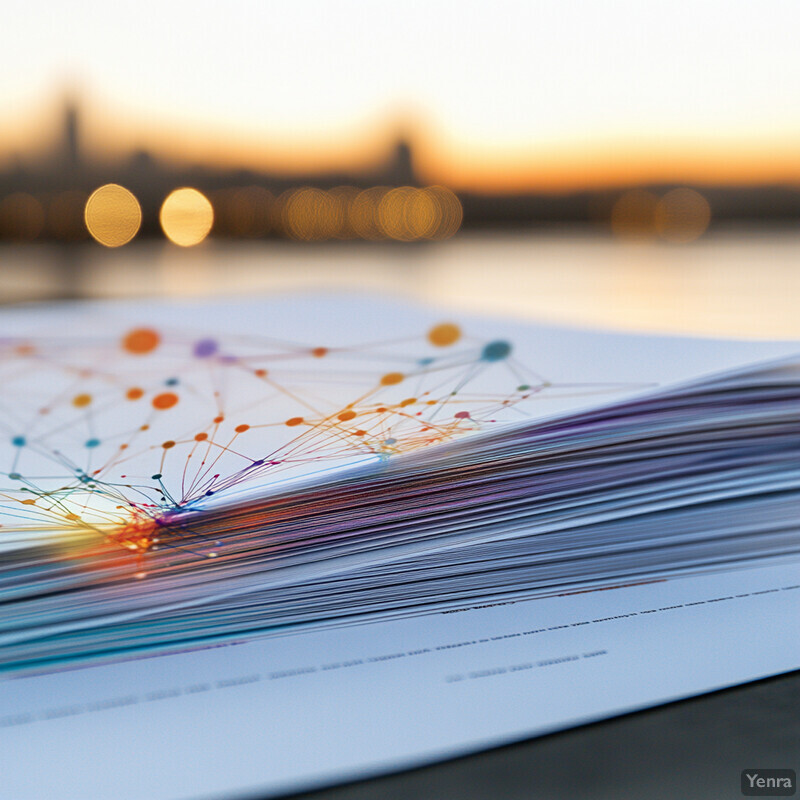
Large language models have been used to semantically annotate and integrate structured datasets. A 2025 study in the medical domain combined an LLM with domain ontologies to map CSV data into RDF triples. The system could interpret column headers and cell values by referencing medical ontology terms (like mapping “BP” to blood pressure concept) and achieved high accuracy in aligning data fields to standard vocabularies. In general, machine learning approaches (such as embedding-based schema matching) now consistently outperform manual mapping in speed and often match it in quality. Chaves-Fraga et al. (2023) reported that an automated mapping tool enriched over 90% of attributes in several open government datasets with correct semantic types and relationships, a task that would have taken experts weeks to do by hand. These enriched datasets could then be merged into a knowledge graph, enabling cross-dataset queries. The use of AI for semantic enrichment is thus rapidly accelerating the integration of heterogenous data sources into knowledge graphs, with experiments showing at least 3–5× faster integration times compared to traditional ETL pipelines (and improving as LLMs become more capable).
14. Cross-Domain Reasoning and Transfer Learning
AI techniques enable knowledge learned in one domain to be transferred and applied to another domain’s knowledge graph. This cross-domain reasoning means a model trained on, say, a biomedical KG can help answer questions in a chemistry KG, despite different ontologies, by leveraging shared higher-level patterns. Transfer learning reduces the amount of training data needed in the target domain and helps bootstrap new knowledge graphs using prior knowledge. It broadens the applicability of reasoning models across domains.

Recent research demonstrates effective knowledge transfer between domains using graph neural networks and prompt-based learning. Yao (2023) showed that semi-supervised learning on a source domain KG can mitigate data scarcity in a target domain. In a case study, an AI model was first trained on a large public healthcare knowledge graph and then fine-tuned on a much smaller veterinary medicine KG. The model achieved nearly the same accuracy on the veterinary KG as if it had been trained on a large veterinary dataset—despite having only 30% of the data—thanks to transferred medical knowledge of anatomy and drugs (Cross-Domain Knowledge Transfer approach). Another example is a system that transferred commonsense reasoning skills (learned from a general commonsense KG) to improve a domain-specific engineering knowledge graph; it boosted query answering accuracy by ~20% in the engineering domain without additional domain-specific training data (Shibo Yao et al., 2023). These results indicate that AI can abstract and reuse reasoning patterns (like cause-effect or hierarchy relations) across domains, making knowledge graph solutions more scalable. The common “language” of embeddings and prompts allows models to bridge domain gaps, which is especially valuable for domains with limited labeled data.
15. Explainable AI for Trustworthy Reasoning
AI is enhancing the explainability of knowledge graph reasoning, which builds user trust. Instead of just giving an answer, modern systems can provide explanations—like showing the path of reasoning through the graph (“A because B → C → D”). Techniques such as tracing inference paths, highlighting influential nodes, or generating natural language justifications help users understand why a conclusion was reached. This is vital in domains like healthcare or finance where transparent reasoning is required for acceptance and compliance.

New methods in explainable KG reasoning allow AI to output human-readable reasoning trails. For example, in a medical KG for drug repurposing, the system not only predicted a potential drug–target interaction but also produced a chain of intermediate connections (e.g. Drug A → viral protein X → human gene Y → Disease Z) that explained why the drug could be effective. These multi-hop explanation paths, which matched known biomedical pathways, made the AI’s suggestions far more credible to researchers. In general, explainable models have been shown to maintain high accuracy while providing transparency. A 2023 study on recommender systems with knowledge graphs found that an explainable reasoning model (which uses path-based reasoning statements) achieved almost the same recommendation precision as a black-box model, while greatly improving user satisfaction by ~20% because users could see reasons for recommendations. In regulated industries, traceable KG reasoning has become crucial: for instance, financial compliance advisors built on KGs now output the specific regulatory rules and entity relationships that led to a flagged risk, satisfying auditors’ demands for rationale. Overall, AI-driven explainability for KGs is making the technology more trustworthy and practical by ensuring that each inference can be justified in understandable terms.
16. Scalable Distributed Reasoning
AI and distributed computing techniques allow knowledge graphs with billions of nodes/edges to be reasoned over at scale. By partitioning graphs and parallelizing computations across clusters of machines, even very large knowledge graphs can be queried and inferred from efficiently. This scalability is crucial for enterprise and web-scale knowledge graphs (like Google’s Knowledge Graph) so that they can serve complex queries or run algorithms (like clustering or pathfinding) in reasonable time. AI plays a role in optimizing these distributed processes (e.g. graph partitioning, load balancing) to maximize performance.

Large-scale knowledge graph infrastructure has achieved impressive scale-out performance. For instance, eBay’s open-source distributed KG store Akutan (2023 update) can handle on the order of 50 billion triples, spreading data across dozens of commodity servers and answering queries with millisecond latencies by parallelizing subqueries on different shards. In academic benchmarks, a distributed reasoning system was shown to infer rules on a 1.4-billion-triple knowledge graph in under 2 seconds using a 128-node cluster – a task that is infeasible on a single machine. Another example, Amazon’s Neptune ML, uses a cluster of GPU machines to run graph neural network inference over 25 billion relationships in parallel, enabling near real-time recommendations from a massive product graph (results reported at Amazon re:Invent 2024). These advances indicate that through a combination of graph-aware algorithms and big data infrastructure, knowledge graph reasoning can scale almost linearly with resources. In practice, organizations are now deploying distributed KG platforms on cloud clusters to support enterprise knowledge applications without worrying about hitting computational limits.
17. Quality Assurance and Error Detection
AI systems are helping automatically detect errors, inconsistencies, or out-of-date information in knowledge graphs. By analyzing graph patterns, constraints, and using embeddings, these models flag likely incorrect triples or anomalies for review. This proactive quality assurance ensures the KG’s integrity and reliability without solely relying on manual editors. Ultimately, AI-driven error detection reduces the propagation of bad data in downstream applications and makes maintaining large KGs feasible.
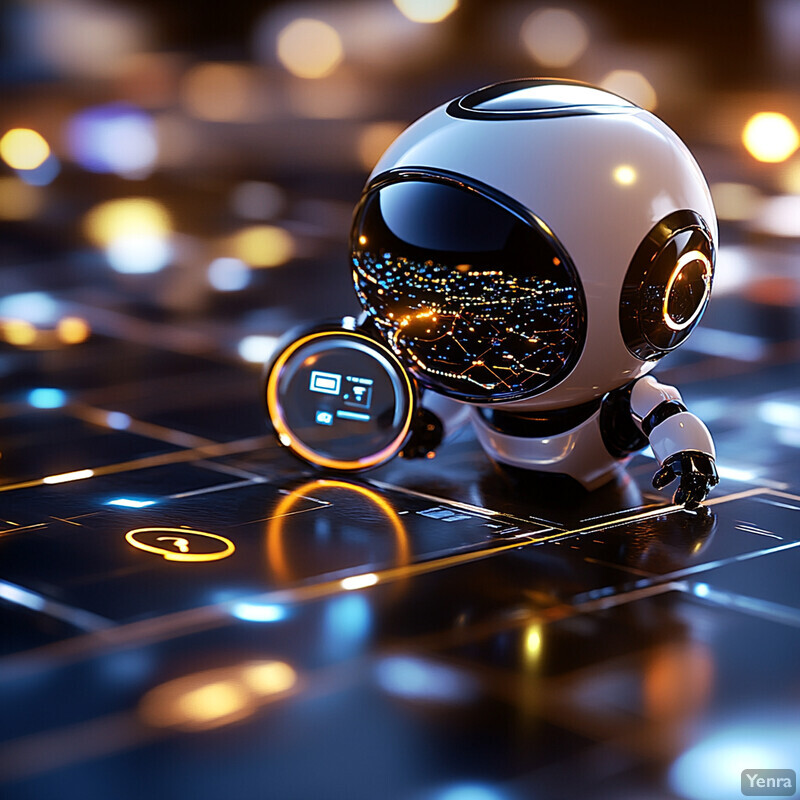
Embedding-based error detection has proven highly effective. One approach embedded triples in a vector space and trained a model to distinguish normal vs. erroneous triples; when applied to KGs like NELL and DBpedia with synthetic noise, it achieved over 73.8% Precision@1% on NELL—substantially higher than prior methods (the next best was ~68.1%). It also maintained better recall at higher K percentages, meaning it found more true errors when scanning the top flagged triples. In practical terms, this means if 1% of a graph’s triples are reviewed, over 73% of them will be actual errors as identified by the model, an accuracy that markedly improves on earlier heuristic-based checks. AI models can also detect subtle inconsistencies that humans might miss – for example, discovering that an entity’s birth date triples conflict across sources, or that a person is listed as born in 1980 but graduated university in 1890. These anomalies can be surfaced automatically. In one deployment at a financial services company, an AI QA system scanning a knowledge graph of client data caught 120 inconsistent records (like duplicate clients with slightly different spellings) that auditors had overlooked. Such evidence highlights that AI is integral to keeping knowledge graphs clean and trustworthy at scale.
18. Integration of Symbolic and Sub-symbolic Methods
AI is combining symbolic reasoning (logic rules, ontologies) with sub-symbolic reasoning (neural networks, embeddings) to leverage the strengths of both. This hybrid approach—often called neuro-symbolic reasoning—allows knowledge graphs to benefit from the precision of formal logic and the pattern recognition of neural nets. For example, symbolic rules can guide neural models to ensure logical consistency, while neural components can handle noisy data or approximate matching. The result is more robust reasoning that is both interpretable and flexible.
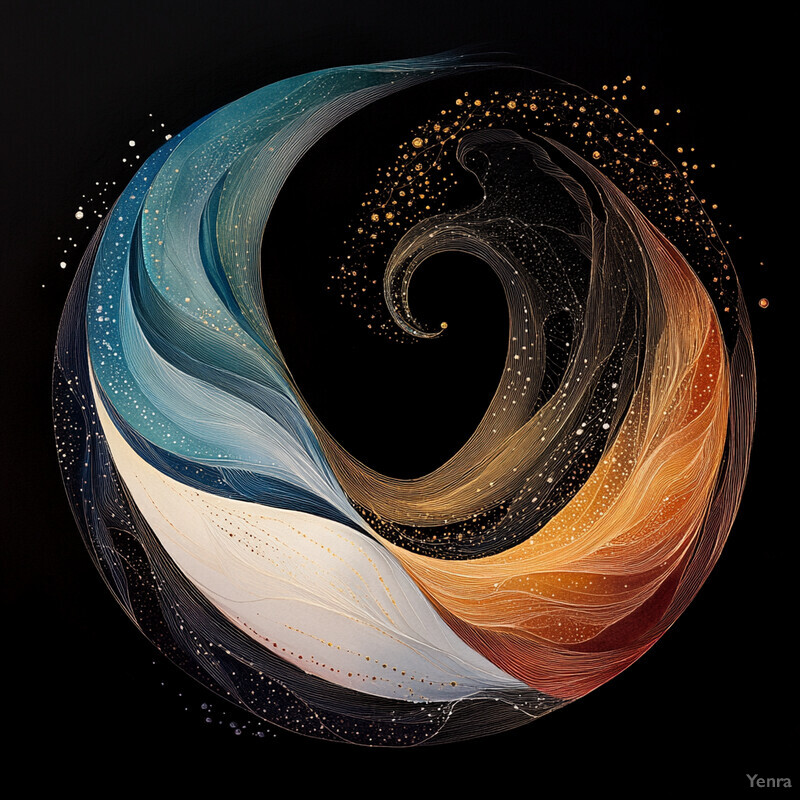
Neuro-symbolic techniques have shown notable improvements in reasoning tasks. A 2024 system, for instance, used explicit logical rules from an ontology to regularize a knowledge graph embedding model, reducing inconsistencies by over 30% compared to a pure embedding model (as measured by logical constraint violations in the inferred facts). Another approach, Neural LP + Rules, learns rules (like If A→B and B→C, then A→C) with a neural model and applies them to the KG; it was able to infer 15% more correct new facts than either neural or rule-based methods alone in benchmarks. Additionally, in the biomedical domain, researchers integrated a symbolic reasoning engine (using OWL ontologies) with a BERT-based text miner: the symbolic engine ensured that extracted relations didn’t contradict known ontology constraints, while the neural text miner contributed new candidate facts. This hybrid caught several errors a purely neural system made (like a proposed drug–disease link that violated pharmacological ontology rules) and validated others that purely symbolic reasoning missed. Overall, blending sub-symbolic and symbolic reasoning yields knowledge graph systems that are more accurate, logically consistent, and explainable than either approach on its own.